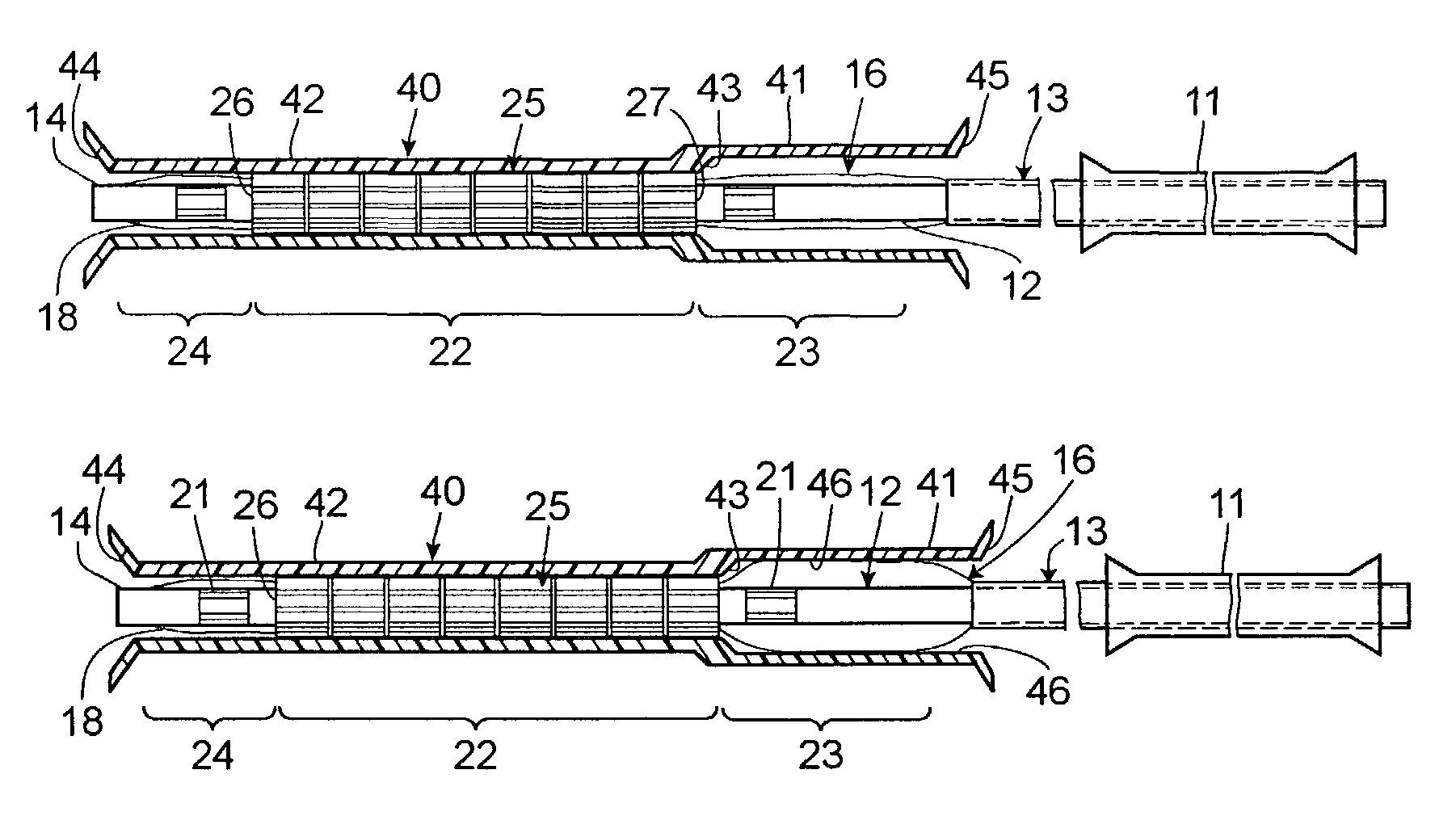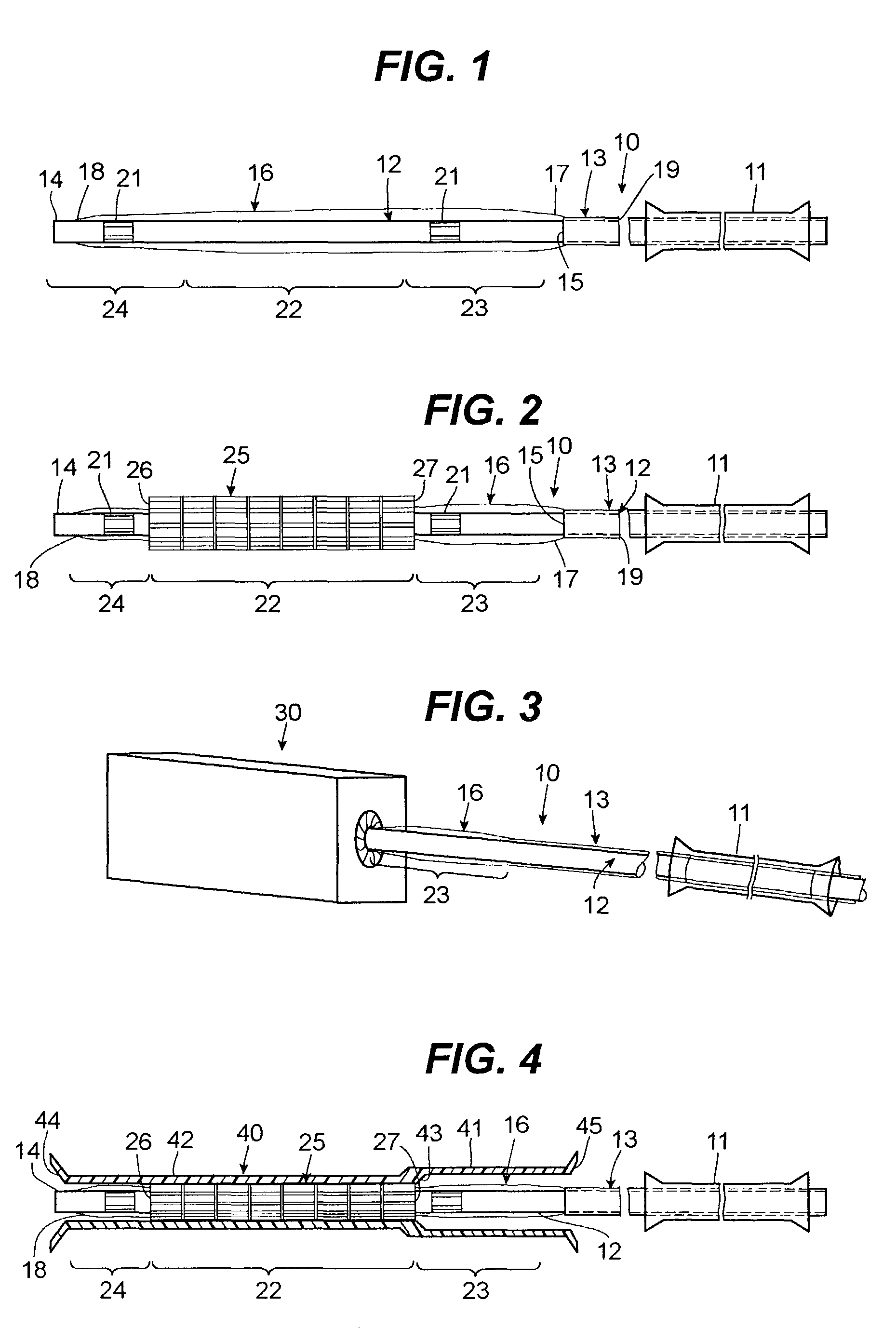Asymmetric stent delivery system with proximal edge protection and method of manufacture thereof
a proximal edge protection and stent technology, applied in the direction of prosthesis, manufacturing tools, blood vessels, etc., can solve the problems of stent crimping, negating the positive effect, and additional angioplasty
- Summary
- Abstract
- Description
- Claims
- Application Information
AI Technical Summary
Benefits of technology
Problems solved by technology
Method used
Image
Examples
Embodiment Construction
[0033]FIG. 1 illustrates a balloon catheter 10 with a protective sleeve 11 pre-loaded thereon. The balloon catheter 10 includes an inner tube 12 disposed within an outer tube 13. The inner tube 12 terminates at a distal end 14 and the outer tube 13 terminates at a distal end 15. The distal end 15 of the outer tube 13 is connected to a balloon 16 which, in turn, is also connected to the distal end 14 of the inner tube 12.
[0034]More specifically, the balloon 16 includes a proximal end 17 connected to the distal end 15 of the outer tube 13 and the balloon 16 further includes a distal end 18 connected to the distal end 14 of the inner tube 12. The annular gap shown at 19 between the outer tube 13 and inner tube 12 can be used for the communication of air or fluid to pressurize the balloon 16 as described below. The inner tube 12 may also be connected to one or more markers 21 for tracking the location of the balloon catheter 10 and, more specifically, the stent 25 (see FIG. 2), within a...
PUM
| Property | Measurement | Unit |
|---|---|---|
| temperature | aaaaa | aaaaa |
| temperature | aaaaa | aaaaa |
| temperature | aaaaa | aaaaa |
Abstract
Description
Claims
Application Information
 Login to View More
Login to View More - R&D
- Intellectual Property
- Life Sciences
- Materials
- Tech Scout
- Unparalleled Data Quality
- Higher Quality Content
- 60% Fewer Hallucinations
Browse by: Latest US Patents, China's latest patents, Technical Efficacy Thesaurus, Application Domain, Technology Topic, Popular Technical Reports.
© 2025 PatSnap. All rights reserved.Legal|Privacy policy|Modern Slavery Act Transparency Statement|Sitemap|About US| Contact US: help@patsnap.com



